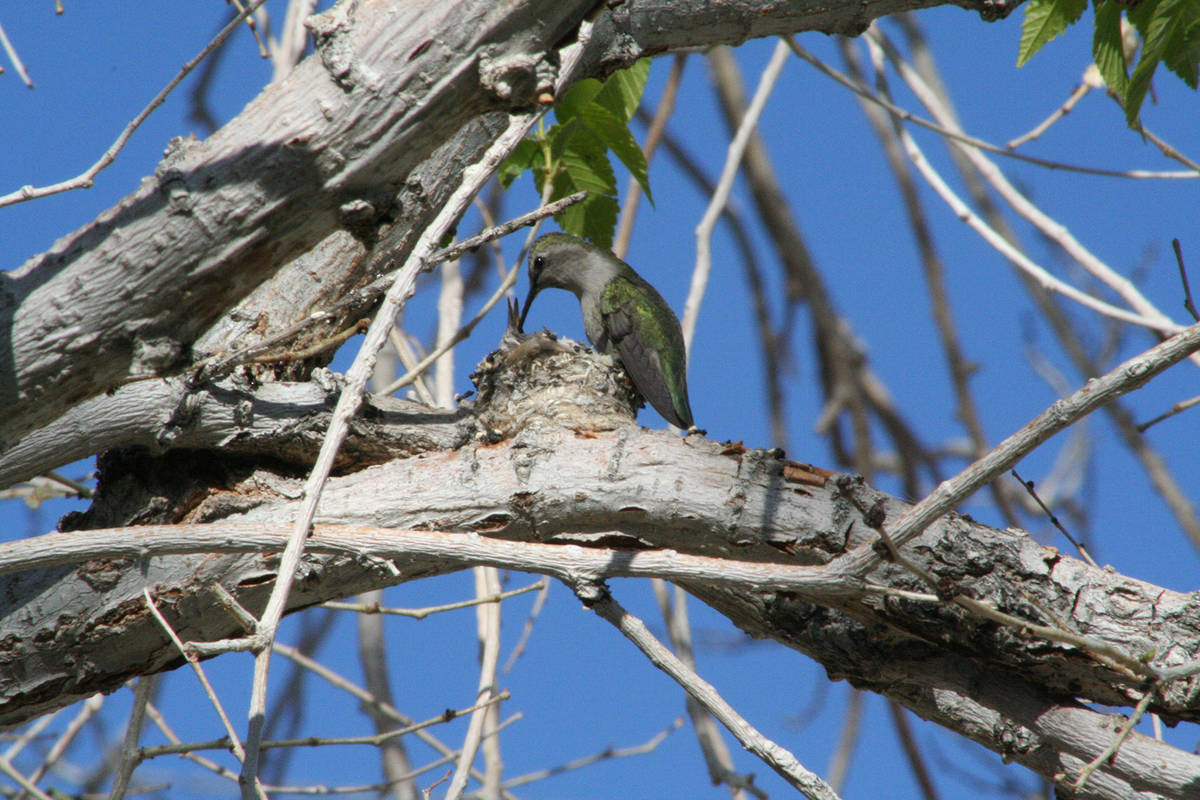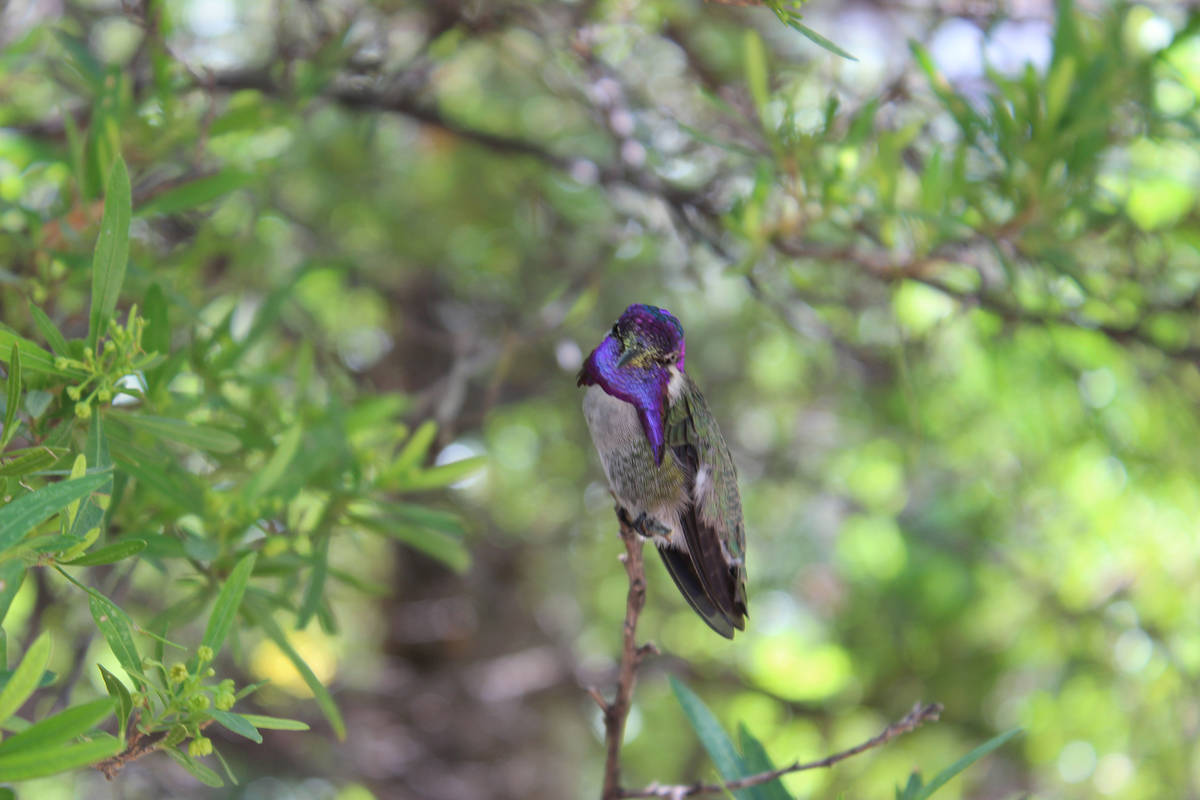If you feed them, they will ‘hum’
Now is the time of year you’ll probably be seeing and hearing more hummingbirds around Southern Nevada. If you want to attract them to your yard or patio — and who doesn’t — think about putting up a hummingbird feeder. While this is an easy task, it does come with a commitment of changing the nectar and cleaning the feeder.
There are more than 300 species of hummingbirds, all native to the Americas. In our area the most common are Costa’s, Anna’s, black-chinned, and broad-tailed hummingbirds. Costa’s and Anna’s often stay year-round if they have a steady source of food. The Rufous hummingbird is also seen here during its migration in spring and fall and the calliope hummingbird, the smallest North American-breeding bird, is sometimes a summer visitor.
You can get very inexpensive, yet reliable hummingbird feeders at most grocery stores, hardware stores, big-box stores and online sources. Most of them are red because that color attracts the hummers to a new feeder. Ideally, get one that has a little perch in front of the feeding areas, and one that is quite easy to take apart and clean.
Hang the feeder in a quiet place, without a lot of noise or foot traffic. Shade is preferable, as is a place you can easily reach and remove the feeder for refilling and cleaning.
Don’t bother buying hummingbird food since it’s so easy to make. It is four parts water, one part pure cane white granulated sugar. Do not use raw sugar, brown sugar, powdered sugar, syrups or sugar substitutes, or powdered drink mixes, as any of these could do much harm or even be fatal to the birds. Do not add red food coloring or dye, as it can harm their kidneys; the mixture does not need to be red.
The ideal way to make the nectar is to boil four cups of water then add one cup of sugar to it. Stir it up or shake it thoroughly in a container specifically made to hold food or drink, such as a fruit-canning jar or a Nalgene. Be sure it’s totally cooled down before filling your feeder. Store extra in the refrigerator; once you have it made, refilling the feeders will not seem like such a chore. The mixture will keep in the fridge about a week.
The critical element of feeding hummingbirds is to change the sugar water frequently, and washing and rinsing the feeder before each refilling As long as outdoor temperatures remain in the 80-90-degree range, you will need to change the nectar only every couple of days. When the days turn to 90 degrees and warmer you’ll need to change it daily, as the sugar water can turn bad quickly.
If you are doing a quick cleaning each time with soap, water and a baby-bottle brush, that usually does the trick. But if you see pink, red or black mold, discoloration or cloudiness of the water, or black gunk in the feeding tubes, the feeder will need to be deep cleaned.
You can use a mixture of one part vinegar to four parts water, or even a safe bleach mixture of one part bleach to 10 parts water. Soak in either mixture for an hour or so and this should remove the problem. After using these toxins, however, be sure to wash and rinse, and then totally dry the feeder, before refilling.
Bees are extremely important to mankind, and we should never harm them, but they can be a nuisance around a hummingbird feeder. Some feeders come with bee guards, but they do not always work. If bees become a problem, just move the feeder at least 10 feet away and that usually stops the problem. Hummingbirds are adaptable and will find it.
Check under your feeder occasionally to be sure it’s not leaking, as small drips down to your patio or deck will attract ants. If you find it is leaking, first tighten up the parts on the feeder. Only if that doesn’t work, you will need to buy a replacement.
Many of Deborah Wall’s columns have been compiled into books about hiking in the Southwest. She is also the author of “Great Hikes, a Cerca Country Guide” and a co-author of the book “Access For All, Seeing the Southwest With Limited Mobility.” Wall can be reached at Deborabus@aol.com.
















